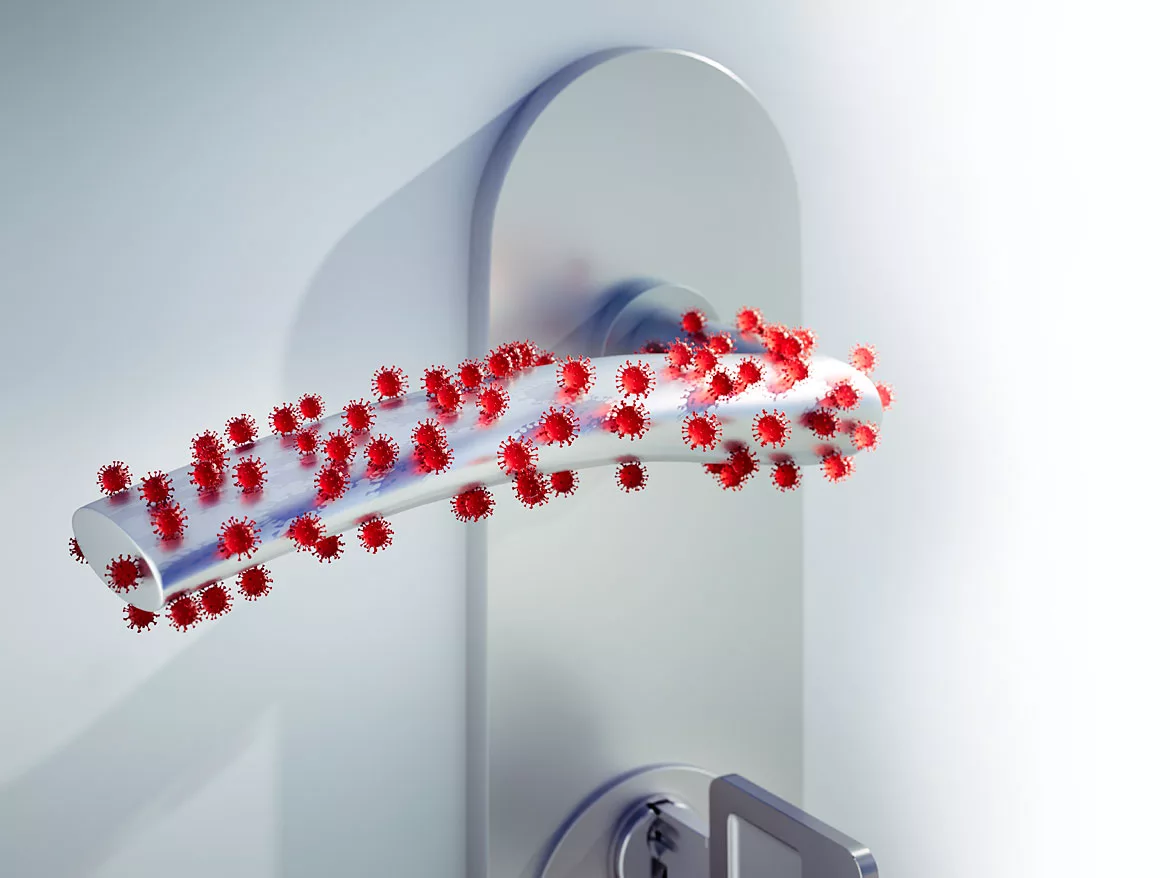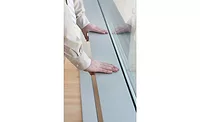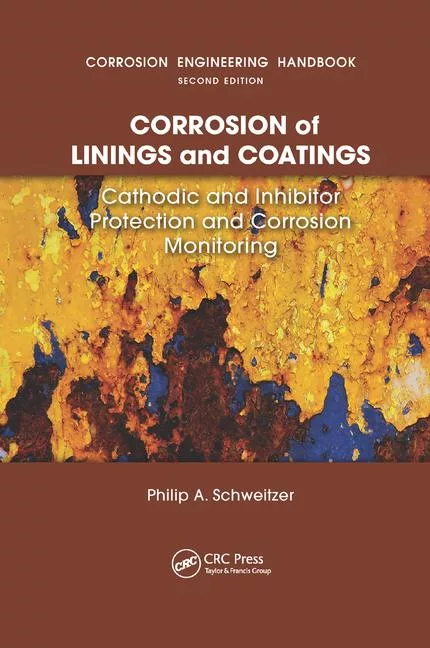Protection Through Antimicrobial Coatings

There have been numerous questions that have generated serious doubt about the use of antimicrobial coatings on surfaces to combat infectious diseases that spread through touch. My first article published in the July 2020 edition of PCI magazine, titled “A Guide to Antimicrobial Coatings,” provided some basic information about the technology. This concise article is meant to educate users further and answer a few questions that were not covered earlier. In-depth technical details about antimicrobial coatings can be found in my book, Handbook of Antimicrobial Coatings.
Why Do Antimicrobial Coatings Take a Long Time to Kill Microbes?
Let us first understand the difference between pesticides (that can kill germs in 5 sec to 5 min) and antimicrobial coatings (that take a minimum of 2 hours). Pesticides mostly kill microbes, but these are short lived since they can’t bind permanently with surfaces. As per EPA norms, less than one percent of pesticide solutions can be used due to health and safety reasons. When such pesticides are sprayed, a unimolecular layer (angstrom thickness) is left on the surface that kills germs through a certain mechanism that differs from one product to another. This thin layer can’t protect against the germs that germinate in porous surfaces (99%). Also, such a thin, nanoscopic layer disappears on first touch, making surfaces open to new germs.
As there is no binder involved in the above application process, coating experts have suggested to use some form of resin to bind these pesticides to the surfaces on which they are applied. Such binders along with pesticides are supposed to adhere “germ-killing molecules” on coated objects and provide long-term microbial protection.
However, once pesticides are mixed with resins they can lose their efficiency/efficacy due to a variety of processes, including non-uniform distribution of pesticides in the coating, low concentration of pesticides in the resin network, change of pesticide chemistry due to reaction with the resin, and even potential encapsulation of pesticides under low-surface-energy polymeric resins, making them unavailable for antimicrobial activity.
It is difficult to create a chemistry that overcomes all the above-mentioned barriers. Once an antimicrobial coating formula is optimized, it must be tested for its application on different surfaces. In order to universally wet surfaces, surfactants are used, which may alter the antimicrobial activity of the pesticides. Therefore, not every antimicrobial product can act efficiently due to poor surface wetting/coverage. This is one of the main reasons why most antimicrobial coatings fail to protect the treated object. Most commercial antimicrobial coating products are sprayed or fogged on the surface, which makes it harder to observe the wetting characteristics. On close observation under a microscope, these products show disconnected coating bubbles instead of continues protective films. The regions between these bubbles are the areas where pathogens prosper.
Most pesticides must be registered with the EPA and should be tested as per American Standard Test Method (ASTM) to show at least 3 log reduction (3LR) in germ activity within 2 hours of pesticide exposure compared to the untreated surface. Unfortunately, only a few to no ASTM standards are available for testing antimicrobial coatings; therefore, they cannot be registered with EPA. Most ASTM standards used to test antimicrobial coatings (that are hydrophobic – water repelling) are modified to record some data for user satisfaction.
The terms pathogen or microbes include several germs, including viruses. It is NOT necessary for a pesticide that kills bacteria to deactivate viruses too (viruses are non-living and can’t be killed, only deactivated). Specialized pesticides are needed to deactivate a virus, and not too many have been discovered so far. Several commercial products claim to deactivate viruses through skin rapturing that have not been scientifically verified. So far, to the best of this author’s knowledge, no long-term protection through antimicrobial coating has been registered by EPA due to the unavailability of a test method. There are several products approved for emergency use, but are NOT registered. However, these emergency-use products must be applied only in that state and on the objects that are approved by EPA (refer to the EPA website). In one of the recent approvals for a leading paint company – a copper-based antimicrobial paint/coating has been registered by EPA that could deactivate (99.9%) viruses (including coronavirus) in less than 2 hours (a requirement for the EPA registration). This registration was based on a specialized test method that was designed for such products. It is not clear that this test method could be universally adopted to register other antimicrobial coatings.
Are Antimicrobial Coatings Still Useful in Combating Pathogens?
A few carefully designed antimicrobial coatings (like INVESIL from Flora Coatings) could provide a similar level of protection as copper or other pesticides. However, antimicrobial coatings are considered secondary forms of protection and help in drastically reducing pesticide usage. If a common pesticide like Triclosan could kill bacteria within 5 seconds, then why can’t it be use everywhere? It is worth mentioning that something that kills bad bacteria would kill good bacteria too, and every toxic pesticide will be directly or indirectly consumed by humans through skin or inhalation. Due to the pandemic, the consumption of pesticides has increased significantly (information based on the sales of leading pesticide manufacturers), which will eventually hurt human health in the future. Therefore, if we can provide secondary protection through antimicrobial coatings that could reduce or minimize the use of pesticides, it could be very helpful to humans and the healthcare sector.
How Do We Know that Antimicrobial Agents Deemed to Protect Surfaces are Working?
Surfaces coated with antimicrobials must remain clean for agents to work. This premise applies to both direct and indirect pesticide applications. If a coated surface (applies to both direct and indirect pesticides) is covered with oil, sweat or any form of residue, it must be cleaned using household cleaning chemicals. Moreover, such cleaning must be done periodically based on the frequency of surface utilization. Most pesticide layers including coatings are invisible, and therefore the customer has to rely on the service provider offering the cleaned surface. Flora Coatings offers patent-protected INVESIL antimicrobial coating that glows under UV light (black). One can observe INVESIL with black light to ensure the service life of the coating on the object. As the product is patent protected, no other product can offer a similar feature.
How Long Can Antimicrobial Coatings Last on Aggressively Used Objects?
The service life of a material depends on a variety of factors, including the backbone chemistry, thickness of the coating and adhesion capability of the coating to the object. Comparative data could be generated using wear analysis that is performed using the Taber Abrasion test. The known data on high-performance coatings like epoxy or polyurethanes can be compared with the data from antimicrobial coatings under test to provide the estimated service life. For example, most hydrocarbon resin-based coatings are short lived and poorly bonded to object surfaces compared to ceramic- or bioceramic-based coatings of the same thickness.
Are There Alternate Methods That Are More Effective On Microbes Than Pesticides?
Some studies suggest that the use of UV light of certain wavelengths can immediately kill microbes on surfaces. However, the use of such techniques is not practical due to a variety of reasons. It is not easy to handle a UV light assembly that involves the use of electricity. The accuracy of UV light lamps/filters used in such assemblies could be challenged and could pose serious risk to human eyes and skin. Moreover, most materials to date are not tested against long-term exposure to UV light and could degenerate prematurely. Additionally, UV light can’t disinfect spaces hidden from light and must be operated from a certain distance for optimum results.
Can We Achieve Faster Deactivation/Kill of Pathogens With Antimicrobial Coatings?
The average human hair thickness (diameter) is 60 microns, and most germs are less than 10 microns in size. This means that the human eye can’t see germs without some type of image-magnifying microscope. The killing or deactivation of pathogens is therefore recorded by registered agencies using established protocol or test methods like ASTM. Most test methods are written for pesticides that are water soluble. Test methods to detect or record rapid killing of germs through hydrophobic coatings are either not available or not universally accepted. Therefore, recording of such rapid data on longer-lasting hydrophobic coatings is not possible at this stage. Similarly, the time-dependent efficacy study of such long-lasting antimicrobial coatings is not possible due to the absence of suitable test methods available to testing agencies.
With So Many Variables, Is It Worth Using Antimicrobial Coatings?
Still confused? Consider a scenario like buying insurance (health/life/automotive etc.). For most healthy, safe people, it seems that paying for insurance is a big waste of money. However, if one falls into some unfortunate situation, insurance protection exists. Consider antimicrobial coatings as your insurance protection against serious infectious scenarios like COVID-19. Most proactive and protected users may not need it, but protection exists when required. While government compels customers to purchase insurance, we are in the process of educating customers and government that such coating materials are now essential due to the ever-growing population and rapidly spreading disease.
How Do I Select a Genuine Product that Can Provide Adequate Protection?
Not all available products are developed and manufactured by experts. Several mushroomed companies offering antimicrobial coating products might be putting customers at a higher risk of acquired infection. A better marketed product doesn’t mean it will provide superior protection. It is advised to conduct good/deep research on different search engines about products offered. Read about the company history, investigate the authenticity, check their expertise level, ask difficult questions and select only when fully satisfied. A carefully designed and developed antimicrobial coating when used as instructed could provide long-term protection like other pesticides.
Is There Any Rapid Method or Handheld Testing Device to Monitor Infected Surfaces?
Most instruments that could detect invisible microbes are highly sophisticated and not easily accessible. Cleaning agencies have been using ATP bioluminescence meters that record the concentration of adenosine triphosphate (ATP) as the relative light unit in organic materials, including living cells. The ATP meter-based test methods are rough indicators and are not accurate. The data from ATP meters record values from both alive and dead microbes (not for most viruses), and is dependent on equipment and how the surface is swabbed. Despite choosing a core biomarker and even having a very quick turnaround time, the technology has some major gaps that cannot outclass the standard lab-based approaches.
For example, viruses cannot be assayed. Also, ATP quenching is a serious issue and can often lead to false low counts (or even no counts). Hence, a low count below acceptable levels may not necessarily mean a clean surface. It has been discovered that swabs, swabbing methods, pressure of swabs on surface, and the instrument utilized play a significant role in readings. In case of coated surfaces, these parameters turned out even more crucial due to the high level of surficial charge transfer complexes needed for antiviral activity. It was also found that ATP meter readings on coated surfaces dropped to significantly low values after cleaning the surface with water, suggesting that dead microbes were cleaned with water and did not contribute to ATP readings. Cleaning the surface a few times with pure water before recording the ATP reading could be insightful. The data from ATP meters, however, is merely a qualitative indication, and reliable results can only be obtained through rigorous laboratory-based testing using ASTM and ISO methods.
Conclusion
It is important to remember that coatings and pesticides serve two different purposes. Antimicrobial coatings are an appropriate marriage between the effects of pesticides and the aesthetics of coatings. A selection of an appropriate product and careful application process is vital for long-term protection against spread of infectious diseases in the ever-growing human population.
Acknowledgement: The author would like to thank Dr. Natarajan Ganesan for his help in writing this article.
Disclaimer: This article is written to educate or inform readers about antimicrobial coating technology. No attempt has been made to endorse any product or create a comparison or superiority of a product over another. The text written here is a view of the author and has nothing to do with the company Flora Coatings. Information shown here is the best to the author's knowledge and does not claim complete accuracy.
Looking for a reprint of this article?
From high-res PDFs to custom plaques, order your copy today!









